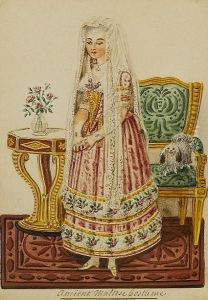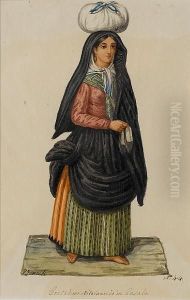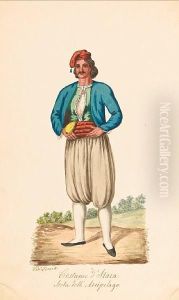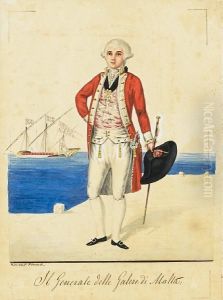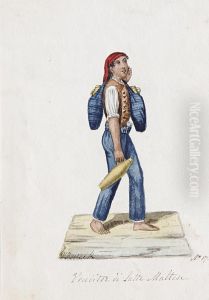Vincenzo Feneck Paintings
Vincenzo Feneck was a Maltese painter whose life spanned the late Baroque and early Neoclassical periods. Born in 1740 in Zebbug, Malta, Feneck is considered one of the notable figures in the Maltese art scene during the 18th century. Though not as widely known as some of his European contemporaries, Feneck made a significant contribution to the cultural heritage of Malta through his art and teaching.
Feneck's artistic journey began with his early training in Malta, where he was influenced by the prevalent Baroque style. The Baroque movement, which was characterized by dramatic expression, rich colors, and intense light and shadow, was dominant in Europe during this period. Feneck’s early works, therefore, demonstrate a strong Baroque sensibility, with a focus on religious themes, which were particularly popular in Malta due to the island's deep Catholic roots.
In his later years, Feneck's style began to reflect the transition to Neoclassicism, which was becoming increasingly popular in Europe. This movement sought to revive the art and culture of ancient Greece and Rome, and it emphasized clarity, order, and balance. Despite this stylistic evolution, Feneck continued to focus on religious subjects, producing altarpieces and other works for churches across Malta.
Feneck was also an important teacher, passing on his skills to a new generation of Maltese artists. His legacy is seen not only in his own works but also in the influence he had on his students. He is credited with helping to foster a local art movement that blended traditional Maltese elements with broader European trends.
Vincenzo Feneck died in 1821, leaving behind a body of work that offers insight into the artistic transitions of his time. His paintings remain as a testament to the rich cultural tapestry of Malta and its place within the broader European art historical context. While Feneck may not have achieved the international fame of some of his peers, his contributions to Maltese art continue to be appreciated by art historians and enthusiasts alike.
